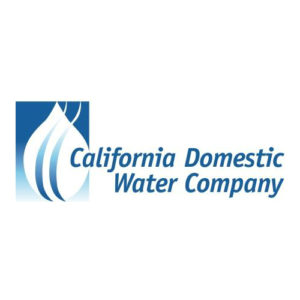
Background
PFAS chemicals (or Per- and polyfluoroalkyl substances) are being detected in water sources across the nation. These substances are man-made chemicals used in a variety of industries around the globe, including in the United States since the 1940s. They include the chemicals perfluorooctanoic acid (PFOA) and perfluorooctanesulfonic acid (PFOS).
The United States Environmental Protection Agency (EPA) is responsible for identifying maximum contaminant levels (MCLs) to regulate drinking water, as outlined in the Safe Drinking Water Act. As of June 2020, there are no federal regulations on the MCLs of PFAS allowed in drinking water.
The EPA has established a non-enforceable lifetime health advisory (LHA) level of 70 parts per trillion (ppt) for the sum of PFOA and PFOS. Health advisories are non-regulatory and provide technical information to state agencies and other public health officials on health effects, analytical methodologies, and treatment technologies associated with drinking water contamination. As the EPA works toward determining future PFAS regulations, Civiltec will continue to track progress and keep our clients apprised of any important updates.
In the absence of federal limits, states such as California have established their own measures to monitor and address PFAS. In the state of California, the state Department of Drinking Water has established notification levels of 6.5 ppt for PFOS and 5.1 ppt for PFOA, and response levels of 10 ppt for PFOA and 40 ppt for PFOS. Other states such as Arizona currently rely solely upon the EPA health advisory level to assess and determine necessary actions related to PFOA and PFOS.
What they are
Per- and polyfluoroalkyl substances (PFAS) are a group of man-made chemicals evidenced to lead to adverse human health effects and are being detected in water sources across the nation. Once manufactured and used in a variety of industries around the globe, PFAS is appearing in a wide range of consumer products that people use daily such as cookware, pizza boxes and stain repellents.
The chemicals are very persistent in the environment and the human body: they don’t break down easily and can accumulate over time. As such, PFAS has gained the nickname of the “forever chemicals.”
Why they matter
With recent studies of PFAS indicating a wide range of negative health impacts, government agencies, industries and other organizations are working to reduce people’s exposure to the chemicals, particularly in drinking water. Many local government organizations and water agencies must now address the issue by conducting tests, publicly reporting PFAS if levels exceed certain thresholds and mitigating PFAS, if necessary depending on the amount of PFAS detected.
How Civiltec Can Help
Civiltec offers clients a reasonable, common-sense PFAS solution, based upon our 20+ years of expertise mitigating constituents of concern in both groundwater and wastewater. We bring services that can be customized to fit your needs and deliver the most effective and cost-efficient solution possible. In addition to the core PFAS solutions listed below, we can leverage our partnerships to deliver additional services as needed, such as sampling.
Civiltec PFAS Solutions
We offer a range of solutions to address PFAS, and we will work with you to tailor a solution to best meet your needs. Through our proven methods listed below, Civiltec has helped clients assess and mitigate PFAS and other constituents of concern. Whether you are interested in assessing potential contamination or treating known PFAS, we have a solution and are available to help.
| System Assessment | Groundwater Treatment | Wastewater Treatment |
|---|---|---|
| Footprint Analysis | Ion Exchange | Ozone Treatment |
| Treatment Solution Analysis | Granular Activated Carbon | |
| Cost Analysis | Powdered Activated Carbon | |
| Existing Infrastructure Capitalization | Nanofiltration and Reverse Osmosis |
Contact Our PFAS Expert
C. Shem Hawes, P.E. is the Principal, Senior Engineer, and Fullerton, CA Branch Manager. He joined Civiltec in 2007, became a partner and stock holder in the company in 2014, and opened the Fullerton office in 2020. Mr. Hawes’ primary responsibilities include the daily supervision of a large and small design teams, management of project budgets and schedules, effective utilization of team resources to successfully deliver project technical requirements, maintaining lines of communication between all team members and stakeholders, and assisting in Civiltec’s quality assurance and technical review programs. Mr. Hawes started his professional experience as the responsible engineer for water and wastewater systems analyses and improvement planning. This includes the design and construction of numerous water and wastewater system facilities for public and private water agencies throughout the western United States.

C. Shem Hawes, PE
Senior Engineer
& Principal
(714) 459-7957
Civiltec PFAS Work

PFAS Treatment System for California Domestic
Civiltec and R.C. Foster contractor were retained under a design-build delivery method by California Domestic Water Company (CDWC) to select and install a PFAS treatment system. PFAS compounds were identified in CDWC’s Well No. 8 groundwater source, necessitating the installation of a new treatment system to make the source suitable for potable water production.
FAQ
Per- and polyfluoroalkyl substances (PFAS) are a group of man-made chemicals that includes PFOA, PFOS, GenX, and many other chemicals. PFAS have been manufactured and used in a variety of industries around the globe, including in the United States since the 1940s. PFOA and PFOS have been the most extensively produced and studied of these chemicals. Both chemicals are very persistent in the environment and in the human body – meaning they don’t break down and they can accumulate over time. There is evidence that exposure to PFAS can lead to adverse human health effects.
PFAS can be found in:
- Food packaged in PFAS-containing materials, processed with equipment that used PFAS, or grown in PFAS-contaminated soil or water.
- Commercial household products, including stain- and water-repellent fabrics, nonstick products (e.g., Teflon), polishes, waxes, paints, cleaning products, and fire-fighting foams (a major source of groundwater contamination at airports and military bases where firefighting training occurs).
- Workplace, including production facilities or industries (e.g., chrome plating, electronics manufacturing or oil recovery) that use PFAS.
- Drinking water, typically localized and associated with a specific facility (e.g., manufacturer, landfill, wastewater treatment plant, firefighter training facility).
- Living organisms, including fish, animals and humans, where PFAS have the ability to build up and persist over time.
Certain PFAS chemicals are no longer manufactured in the United States as a result of phase-outs, including the PFOA Stewardship Program in which eight major chemical manufacturers agreed to eliminate the use of PFOA and PFOA-related chemicals in their products and as emissions from their facilities. Although PFOA and PFOS are no longer manufactured in the United States, they are still produced internationally and can be imported into the United States in consumer goods such as carpet, leather and apparel, textiles, paper and packaging, coatings, rubber and plastics.
(Information from EPA Basic Information on PFAS webpage)
PFAS are found in a wide range of consumer products that people use daily such as cookware, pizza boxes and stain repellents. Most people have been exposed to PFAS. Certain PFAS can accumulate and stay in the human body for long periods of time. There is evidence that exposure to PFAS can lead to adverse health outcomes in humans. The most-studied PFAS chemicals are PFOA and PFOS. Studies indicate that PFOA and PFOS can cause reproductive and developmental, liver and kidney, and immunological effects in laboratory animals. Both chemicals have caused tumors in animals. The most consistent findings are increased cholesterol levels among exposed populations, with more limited findings related to:
- low infant birth weights,
- effects on the immune system,
- cancer (for PFOA), and
- thyroid hormone disruption (for PFOS).
(Information from EPA Basic Information on PFAS webpage)
Per- and polyfluoroalkyl substances (PFAS) are a group of man-made chemicals that have been in use since the 1940s, and are (or have been) found in many consumer products like cookware, food packaging, and stain repellents. PFAS manufacturing and processing facilities, airports, and military installations that use firefighting foams are some of the main sources of PFAS. PFAS may be released into the air, soil, and water, including sources of drinking water.
PFOA and PFOS are the most studied PFAS chemicals and have been voluntarily phased out by industry, though they are still persistent in the environment. There are many other PFAS, including GenX chemicals and PFBS in use throughout our economy.
GenX is a trade name for a technology that is used to make high performance fluoropolymers (e.g., some nonstick coatings) without the use of perfluorooctanoic acid (PFOA). HFPO dimer acid and its ammonium salt are the major chemicals associated with the GenX technology. GenX chemicals have been found in surface water, groundwater, finished drinking water, rainwater, and air emissions in some areas.
As part of EPA’s draft toxicity assessment, the agency has developed draft oral reference doses (RfDs) for GenX chemicals and PFBS. Learn more about EPA’s draft toxicity assessment on GenX.
(Information from EPA Basic Information on PFAS webpage)
There are a variety of ways that people can be exposed to these chemicals and at different levels of exposure. For example, people can be exposed to low levels of PFAS through food, which can become contaminated through:
- Contaminated soil and water used to grow the food;
- Food packaging containing PFAS; and
- Equipment that used PFAS during food processing.
People can also be exposed to PFAS chemicals if they are released during normal use, biodegradation, or disposal of consumer products that contain PFAS. People may be exposed to PFAS used in commercially-treated products to make them stain- and water-repellent or nonstick. These goods include carpets, leather and apparel, textiles, paper and packaging materials, and nonstick cookware.
People who work at PFAS production facilities, or facilities that manufacture goods made with PFAS, may be exposed in certain occupational settings or through contaminated air.
Drinking water can be a source of exposure in communities where these chemicals have contaminated water supplies. Such contamination is typically localized and associated with a specific facility, for example:
- an industrial facility where PFAS were produced or used to manufacture other products; or
- an oil refinery, airfield or other location at which PFAS were used for firefighting.
PFOA, PFOS, and GenX have been found in a number of drinking water systems due to localized contamination. You can view more information about exposures to PFAS through drinking water on our Drinking Water Health Advisories for PFOA and PFOS page.
(Information from EPA Basic Information on PFAS webpage)
There is evidence that exposure to PFAS can lead to adverse health outcomes in humans. If humans or animals ingest PFAS (by eating or drinking food or water than contain PFAS), the PFAS are absorbed and can accumulate in the body. PFAS stays in the human body for long periods of time. As a result, as people get exposed to PFAS from different sources over time, the level of PFAS in their bodies may increase to the point where they suffer from adverse health effects.
Studies indicate that PFOA and PFOS can cause reproductive and developmental, liver and kidney, and immunological effects in laboratory animals. Both chemicals have caused tumors in animal studies. The most consistent findings from human epidemiology studies are increased cholesterol levels among exposed populations, with more limited findings related to:
- infant birth weights,
- effects on the immune system,
- cancer (for PFOA), and
- thyroid hormone disruption (for PFOS).
(Information from EPA Basic Information on PFAS webpage)
The EPA is responsible for identifying maximum contaminant levels (MCLs) to regulate drinking water, as outlined in the Safe Drinking Water Act. As of June 2020, there are no federal regulations on the maximum levels of PFAS allowed in drinking water.
The EPA has established a non-enforceable health advisory level of 70 parts per trillion (ppt) for the sum of PFOA and PFOS. Health advisories are non-regulatory and provide technical information to state agencies and other public health officials on health effects, analytical methodologies, and treatment technologies associated with drinking water contamination. The EPA is working toward determining future PFAS regulations; visit the agency’s webpage on EPA Actions to Address PFAS to learn more.
In the absence of federal limits, states such as California have established their own regulatory limits on PFAS. In the state of California, the state Department of Drinking Water has established notification levels of 6.5 ppt for PFOS and 5.1 ppt for PFOA, and response levels of 10 ppt for PFOA and 40 ppt for PFOS. Other states such as Arizona currently rely solely upon the EPA health advisory level to assess and determine necessary actions related to PFOA and PFOS.
Multiple technologies have proven capable of removing PFAS from drinking water, including the following list of treatments proven as effective by the EPA:
- Granular Activated Carbon (GAC) – Chemicals like PFAS stick to the small pieces of carbon as the water passes through.
- Powdered Activated Carbon (PAC) – The carbon is powdered and is added to the water. The chemicals then stick to the powdered carbon as the water passes through.
- Ion Exchange Resins – Small beads (called resins) are made of hydrocarbons that work like magnets. The chemicals stick to the beads and are removed as the water passes through.
- Nanofiltration and Reverse Osmosis – A process where water is pushed through a membrane with small pores. The membrane acts like a wall that can stop chemicals and particles from passing into drinking water.
(List from the EPA’s Treating PFAS in Drinking Water webpage)
Civiltec is at the forefront of assessing and treating PFAS. Our team of experts can guide you through the process of testing, treating and disposing of materials associated with PFAS mitigation. To contact us regarding this service offering, call us at 626-357-0588 or fill out our contact us form below.
Contact Us
Recent Tweets
Contact Us at
- Monrovia, CA 626-357-0588
- Fullerton, CA 714-459-7957
- Prescott, AZ 928-771-2376
- Phoenix, AZ 623-582-0970
